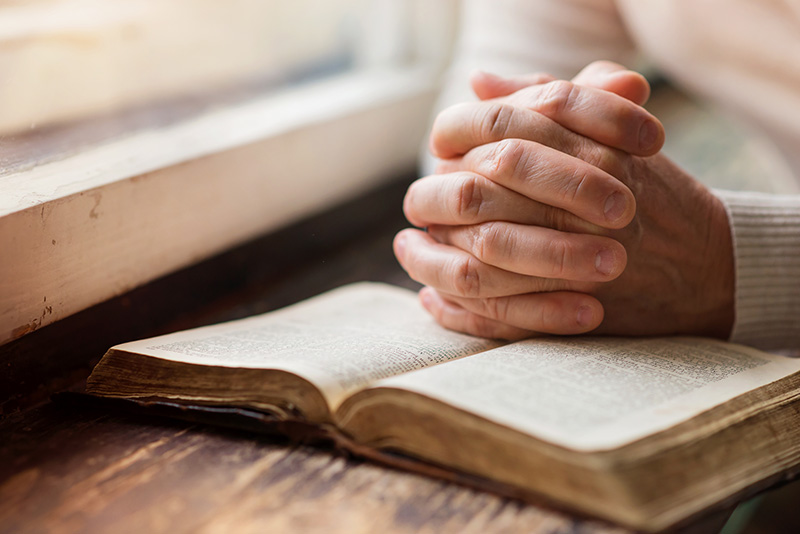Before death
- Photos: (collected more at ordinary times)
- Collect photo albums for future commemoration.
- Half-length full-face color photo (enlarged to 12 inches) for the funeral.
- Life records:
Date of birth, place of birth, siblings and children, schooling, employment, growth, expertise, etc.
- Testament: (made while the patient still can speak)
- The mottos and expectations left to family members, which can be retained by recording, video recording, letter writing and other methods.
- Property distribution or debt, etc.
- Clothes preparation: (on deathbed)
- A pair of neat underwear and clothing (as preferred by the patient), and a diaper (to avoid soiling the clothes) are prepared for changing on the deathbed. If the patient is to be put in the freezer, prepare another set for encoffinment. (discuss with the undertaker first)
- Prepare a shroud for older people (according to traditional customs).

Dying
- Buddhism
- Prepare a chanting machine, and when friends and relatives come, guide them in chanting.
- Give a brief revelation to be as brief as possible (including affirming his/her life, promising that his/her family would live well, reminding him/her to go ahead to the bright place), and then accompany the patient to continue reciting a Buddhist chant (Amitabha).
- Changing: change the patient’s clothes before he/she dies or after 8 hours of chanting following his/her death.
- General folk beliefs
- "You get what you wear," so change the patient’s clothes before he/she dies.
- Sew up the pockets (indicating more for posterity).
- “Last money” (Shou Wei Qian 手尾錢): put it in the patient's hand or pocket (in a red envelope), remember to collect it before putting the patient in a freezer, and then give it to the descendants later.
- Christianity and Catholicism
On his/her deathbed, besides family members being present, church pastors or priests, nuns (or friends and relatives instead) can be invited to pray for, comfort the patient, sing hymns, tell the patient in his/her ear that he/she can rest assured that everything would be alright. Pray for god's blessing until the last moment, take his/her hand, carry him/her to heaven.

After death
- Buddhism
- It is believed that the soul has not yet left the body 8 hours after death, during which touching or crying will deepen his/her reluctance or pain to let go, and family instead can recite a Buddhist chant.
- Cover a quilt.
- Generally, the body in the ward can be sent to the rest room for chanting, accompanied by family members for 8 hours.
- Christianity and Catholicism
- After the announcement of the time of death, the pastor again leads the family members in prayer.
- Family members and nursing staff wash the body with warm water and put on clean clothes.
Death in hospital
- Prepare the identity card and apply for a death certificate. If you need a certificate of hospitalization, you should apply for a Class B diagnosis certificate.
- Procedures of body transportation: the personnel of the rest room sign for it and then give it to the family members.
- Deliver the body to the funeral home.
Death at home
- Prepare a Class B diagnosis certificate of terminal illness for the reference of the doctor who issues a death certificate.
- Record the time of death.
- During office hours, contact a doctor of the health center or nearby clinic for examination at home and issue a certificate of diagnosis of death.
- Death certificates of the deceased: approximately 10 copies are required; diagnosis certificate: it depends on individual insurance coverage.
Funeral matters
- When to contact the funeral service? The sooner you get ready, the better, in that you can compare many funeral homes
- Provide family members with information about the process of body disposal.

List of documents needed for handling various matters after the death of the patient
- Death certificate of the deceased (about 15 copies), with several more copies kept in reserve.
- Termination of each deposit account (1 copy)
- Termination of each insurance program and application for payment made to the beneficiary (1 copy)
- Household Registration Office - Household death certificate (1 copy)
- For funeral parlor entry (1 copy)
- For burial/cremation permit (1 copy)
- For use of the columbarium pagoda (1 copy)
- For use of the cemetery (1 copy)
- The deceased's cancelled household registration transcript
- For use of the columbarium pagoda and cemetery: in the city/county (1 copy)
- Insurance payment (1 copy)
- Land Office: name change for real property (1 copy)
- National Tax Administration: name change for a legacy (1 copy)
- The applicant's identity card and seal:
- For funeral parlor entry
- For burial/cremation permit
- For use of the columbarium pagoda
- National Tax Administration
- Obituary: Family members ask for leave from work (1 copy)
- National pension (1 copy)
- Labor insurance funeral subsidy (1 copy)

